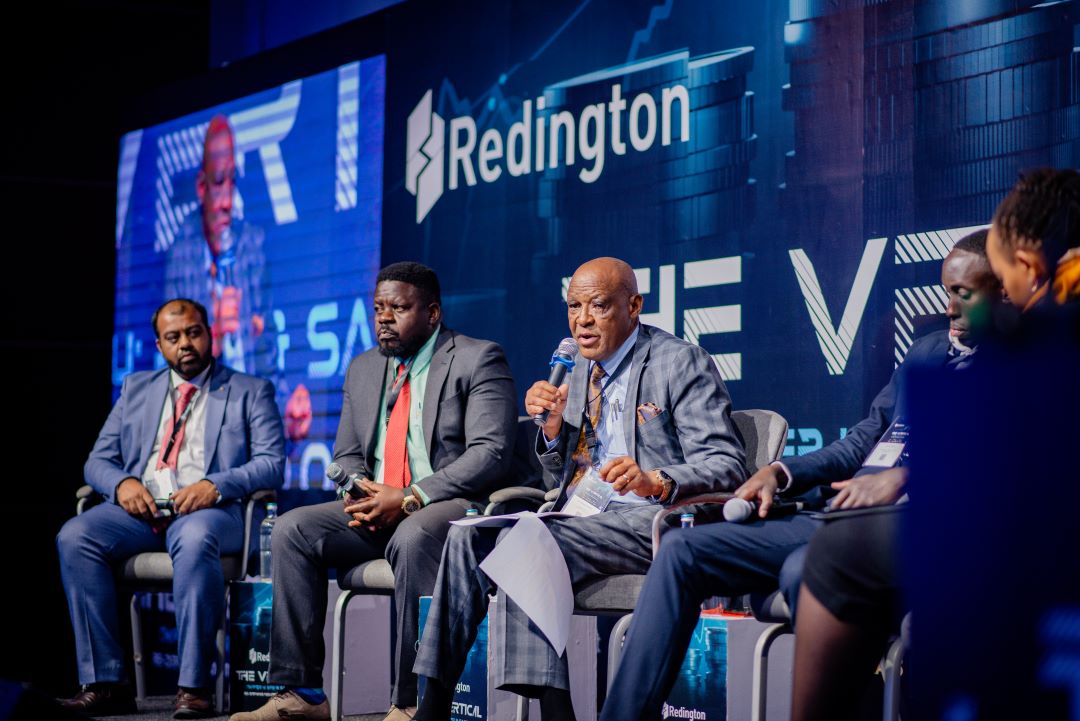advertisement
The Vertical By Redington Combats Money Laundering

Recently, Kenya seems to have gained notoriety as a hub for money laundering, an illicit practice that spans both formal and non-formal sectors. While Kenya’s banking, financial services, and insurance sectors (BFSIs) have shown remarkable advancements, the country itself remains under scrutiny.
“We are on the watch list of the Financial Action Task Force (FATF), the global money laundering and terrorist financing, over anti-money laundering (AML) concerns,” stated Dr Benjamin Musau, Managing Partner, B M Musau & Co. Advocates, a panellist at The Vertical by Redington, a series of events that showcase industry-specific digital solutions. This particular event was designed to bring solutions to the right people within the right organisations in the BFSI and SACCOs industries.
This stems from the Money Laundering and Terrorist Financing Risk Assessment report. Kenya was identified as a high-risk country for money laundering owing to her strategic location as a gateway to East and Central Africa. Even then, “There does appear to be a concerted effort to control money-laundering as seen in the comprehensive Proceeds of Crime and Anti-Money Laundering Act.“
advertisement
With an extended commitment to AML, including the inclusion of non-listed non-financial businesses and professions, Kenya faces the challenge of curbing financial crimes such as placement, layering, and integration, which contribute to crimes like corruption, drug trafficking, and economic crimes.
Kenya’s AML Landscape
Kenya’s recognition as a centre for money laundering is tied to various activities, including the infamous practices of placement, layering, and integration. Criminal activities such as corruption, drug trafficking, and economic crimes have led to increased scrutiny of the country. This is not merely a matter of reputation; it’s a matter of national and global security. Terrorism and drug trafficking are deeply intertwined with money laundering, and if left unaddressed, these activities can cripple economies and disrupt financial systems.
advertisement
Hemal Shah, Product Management Lead, DigiGlass. “Advanced technologies such as AI, ML and blockchain can learn patterns used by threat actors to act in a way that launders money. Bringing and monitoring all this data collected during KYC (Know Your Customer) predicts which users are eventually malicious actors in the future. Human effort is then directed towards these potential customers.”
However, as much as technology can be a solution, it also presents challenges.
“The tone at the top,” as observed by David Marete, Managing Director, Ujuzi Software Solutions Ltd, an AML start-up. The stance taken by senior management sets a precedent for the organisation’s commitment to buy technologies combating money laundering. If the tone is negative, budget allocations for AML initiatives may be compromised, weakening the fight against financial crimes. He also stated there was a knowledge gap in Kenya. While there are certifications, not everyone in the industry is properly trained. “This creates loopholes through which malicious actors can employ their stand.”
advertisement
While AML is often symbolised by a “green” certification, the challenge lies in ensuring that every individual in the organisation is well-trained and aligned adequately with AML efforts. Failure to do so exposes vulnerabilities and creates an opening for malicious actors. The core of the matter lies in organisational integrity; is there a shared commitment to upholding ethical practices?
Addressing money laundering isn’t a linear journey; it’s a multifaceted challenge that requires a synchronised effort across various spheres of the ecosystem. From laundering tracking to enforcement, understanding the intricacies of the ecosystem is essential. Perhaps this explains why intentional collaboration across agencies and with the government tackles AML effectively.
“This is a challenge that is as human as it is technological. Humans drive the tracking and understand the figures in our behaviour as well as the economic indicators and regulatory enforcement, stated Timothy Oriedo, Founding Chief Data Scientist, Predictive Analytics Lab.”
Innovative Approaches Needed
Kenya’s fight against money laundering requires innovation. One intriguing approach involves the development of systems that mimic human patterns. By doing so, financial institutions can detect abnormal activities and flag potential money laundering attempts. Such technology not only streamlines the process but also enhances accuracy. This is tricky for SACCOs.
“A lot of SACCOs are only now implementing a core-banking system. Most of them tend to lean towards Microsoft Dynamics. And, legitimately, if you looked at their balance sheets, they qualify to be banks. But the collegial aspect of money also makes them conservative. And they do not want to buy technology or software they don’t understand, said Marete.
Additionally, an essential aspect of AML lies in customer identification and onboarding. Streamlined and comprehensive processes ensure that individuals with nefarious intentions are denied access to the financial system. This safeguard works when technology is installed.
It begs one last look at cybercrime through Oriedo’s eyes indicating that “The criminals are not becoming sophisticated. It is the tech that is becoming sophisticated. Tech players are ahead of the game. What threat actors do is harness the weakness of the technologies because of a lack of regulation.